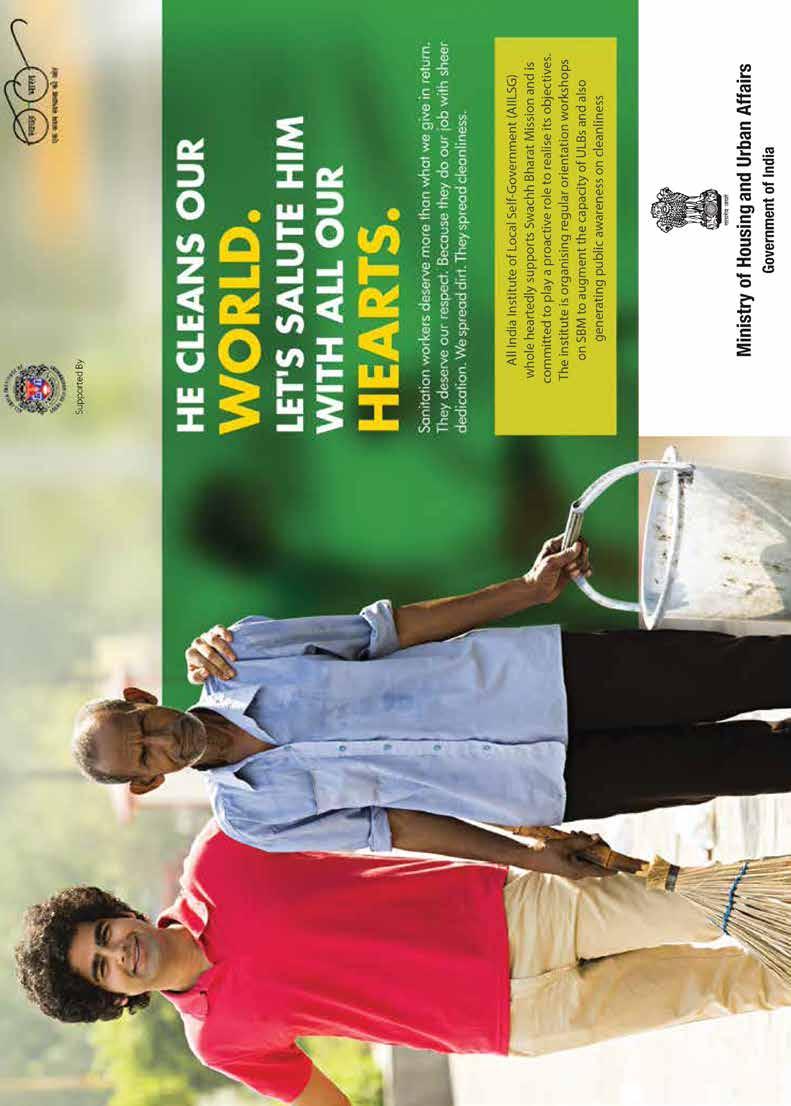
3 minute read
Urban Agenda
by Urban Update
Reinventing Approaches Time to consider pandemics as disasters
Ashok WAnkhAde
Advertisement
Managing Editor The COVID-19 pandemic not only cost millions of lives worldwide, it also showed that the infrastructure in cities is incapable of handling a pandemic-like situation. And considering this was not the last pandemic the world will see, it is time that cities reform the way they look at pandemics Ever since the pandemic began last year, cities have actively tried to control the virus spread, initially by imposing lockdowns, and now by vaccinating as much of its population as possible. However, many experts have said time and again that these are only temporary measures. Controlling coronavirus with the help of vaccines will work to eradicate COVID-19. However, the possibility of another contagious disease spreading among humans is not extinguished. Thus, rethinking how city governments treat pandemics is of vital importance.
The best way to do that is to treat a pandemic as a disaster and work on containing and eradicating it with similar policies and techniques. Much like a disaster, a pandemic also causes loss of life, and sometimes infrastructure too. Here, the case of Indian smart cities is one which has set an example for cities across the world to follow.
Smart cities in India followed a strategy similar to that of Prime Minister Narendra Modi’s 10-Point Agenda for Disaster Risk Reduction. Prominent among those was the use of social media to address public issues. The proactive role that integrated command and control centres took up to deal with COVID-19 cases made it easier for city administrations to track new and existing cases. A wellplaced digital infrastructure helped them in coordinating efforts between the general public, relief organisations and medical institutions, much like Point 5 and 7 of the Agenda.
Secondly, various research institutes continue to take up research projects to better understand coronavirus and how it is mutating, what can be done to counter its spread and how severe the disease can become. This is in line with Point 9 of the Agenda and helps in creating a kind of ‘database’ of the virus.
Thirdly, the increased role of ASHA workers and other women volunteers, mainly as medical nurses, also cannot be ignored. For many women, the pandemic was a chance to step out of the house and serve the community. This not only helped in increasing their self-respect, but also made them feel confident and increased their status in society. Much like Point 3 of the Agenda, the initiative of city administrations to include women as frontline warriors contributed to women empowerment in a major way.
Prime Minister Modi’s announcement of distributing free vaccines to all created a safety net around the most economically vulnerable section of the society, and assured them that they will get the chance to be vaccinated too. On the other hand, the government’s relief packages for companies and businesses has also given a boost to economic activities. This replicates Point 2 of the Agenda. Lastly, the world came together to fight the pandemic in India during its second wave in May-June this year. Not only did countries show empathy but also sent medical equipment and supplies to the country to help the failing health infrastructure of the country. This way, international collaboration was taken to new heights, as enlisted in Point 10 of the Agenda.
Thus, it is clear that Indian cities worked to control the pandemic by considering it a disaster and adhering to the Prime Minister’s 10-Point Agenda. Yes, many innocents lost their lives. But further destruction was averted only because cities adopted this approach without hesitation and in unison.










